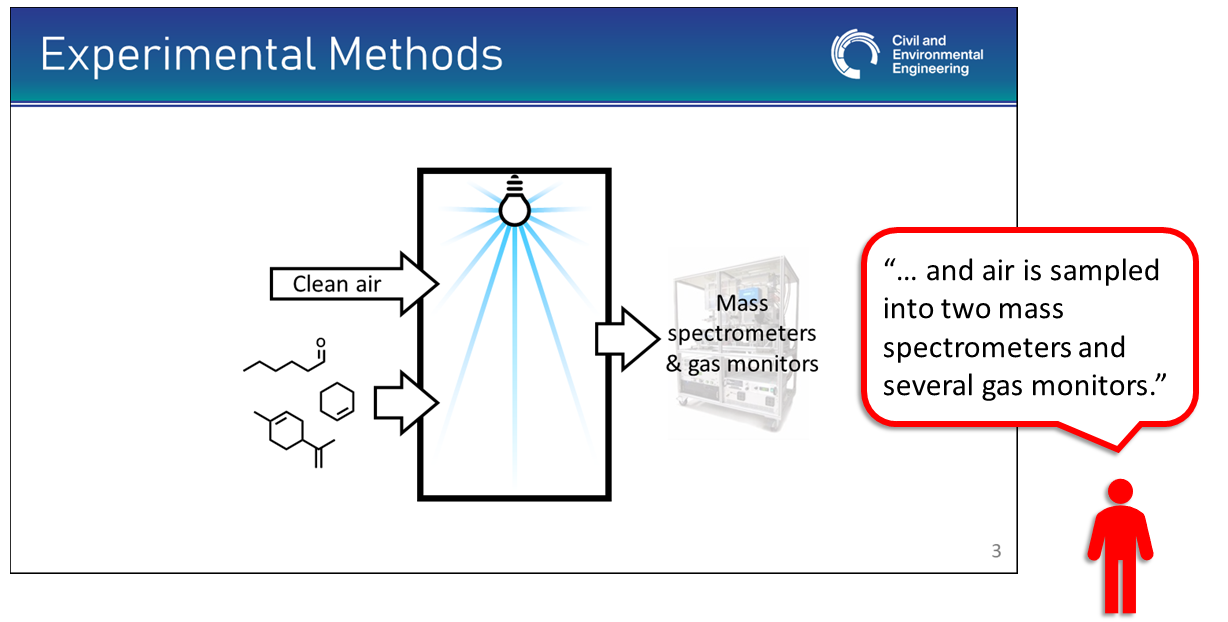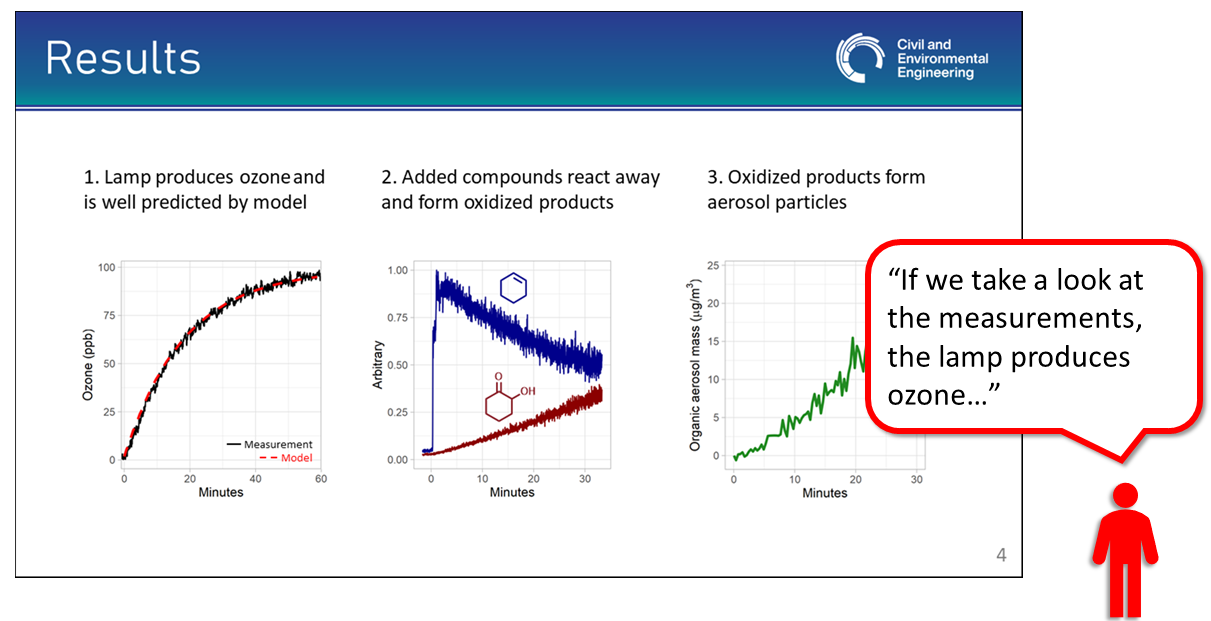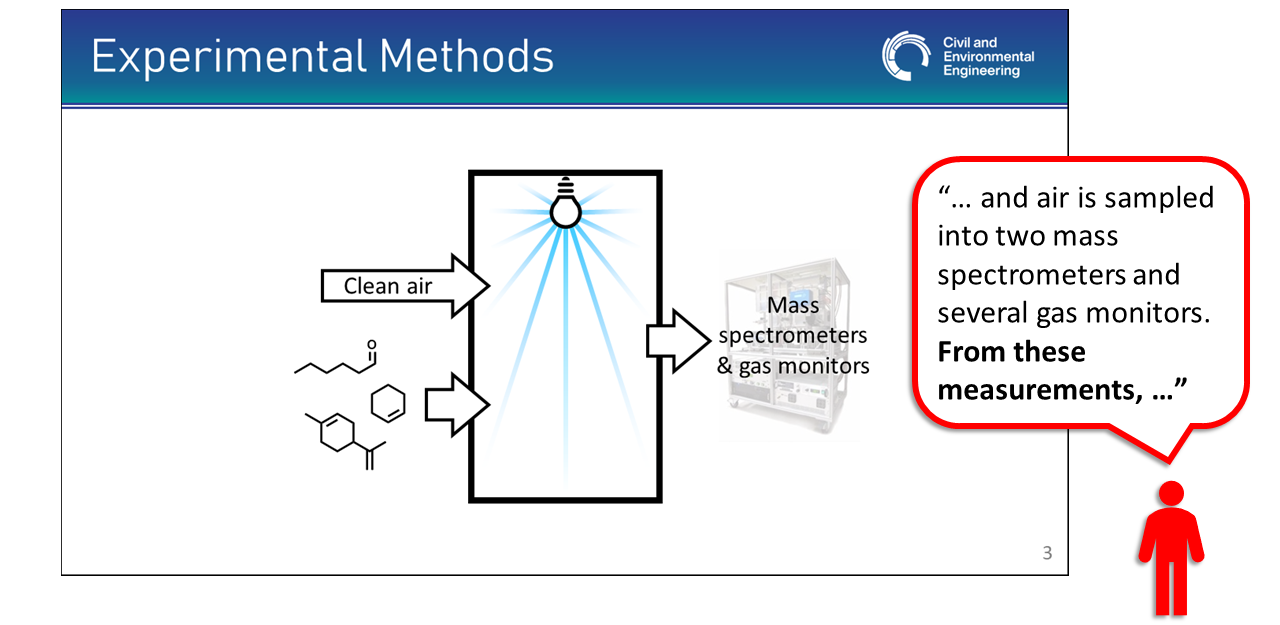We’ve all sat through scientific presentations to find our focus drifting away from the topic at hand, as the patterns in the ceiling tiles suddenly become more interesting than the projected slides. Where does a presenter lose the attention of their audience, and why does this happen?
An influential former art history professor of mine, Michael Lewis of Williams College, once pointed out to me that these lapses in attention can often be initiated by inconspicuous breaks in the flow of a presentation. To be more specific, the culprit is often the lack of smooth transitions between slides.
When most people present, they will describe the contents of a slide, then pause and click to the next slide, and then resume talking. If we consider presenting to be just a formalized version of storytelling, this pause breaks the flow of the story. It’s a great time for your audience to start looking out the window.
Instead, we can focus on slide transitions as a way to knit a presentation together. Pick two consecutive slides, like those shown below, and come up with a single sentence that leads from the conclusion of the first slide to the framing of the second. Say this sentence as you click between the slides, linking one to the next as an integral step in your story.
Example slide transition without a sentence bridging the two slides:

 In this example, notice how the presenter comes to the end of a sentence before moving forward to the next slide, subtly breaking the flow of the story.
In this example, notice how the presenter comes to the end of a sentence before moving forward to the next slide, subtly breaking the flow of the story.
Example slide transition with a sentence bridging the two slides:

 What do you think of this modified script? Here, I’ve chosen a sentence that takes us from the description of the experimental methods to the introduction of three key results. The difference between these two examples may be subtle, but if you read these out loud and imagine clicking between the slides, I think you’ll agree that the use of a bridging sentence can be powerful.
What do you think of this modified script? Here, I’ve chosen a sentence that takes us from the description of the experimental methods to the introduction of three key results. The difference between these two examples may be subtle, but if you read these out loud and imagine clicking between the slides, I think you’ll agree that the use of a bridging sentence can be powerful.
Thinking about a presentation in this way, as a series of slide transitions, can also help you prepare and rehearse. While some folks like to memorize an entire script for a presentation, this is difficult to do and can often come off as a bit stale. Instead, consider memorizing your sentences that transition between slides. I’ll often even write these out in the Powerpoint Notes to help guide me through the slide deck. These sentences help keep the momentum of your presentation going and jumpstart your thought process as you explain the content of each subsequent slide.
I couldn’t believe how much of a game-changer this tip could be when I first learned about it. While Professor Lewis introduced this presentation strategy as part of a class on the history of gothic revival architecture, I think it’s equally applicable across any field.
If you want some hands-on help with rehearsing presentations and you’re a member of the MIT community, you can always make a Comm Lab appointment, and we can go through it together!
Additional resources
Check out the full collection of free CommKit Resources created by the MIT CEE Comm Lab team.
